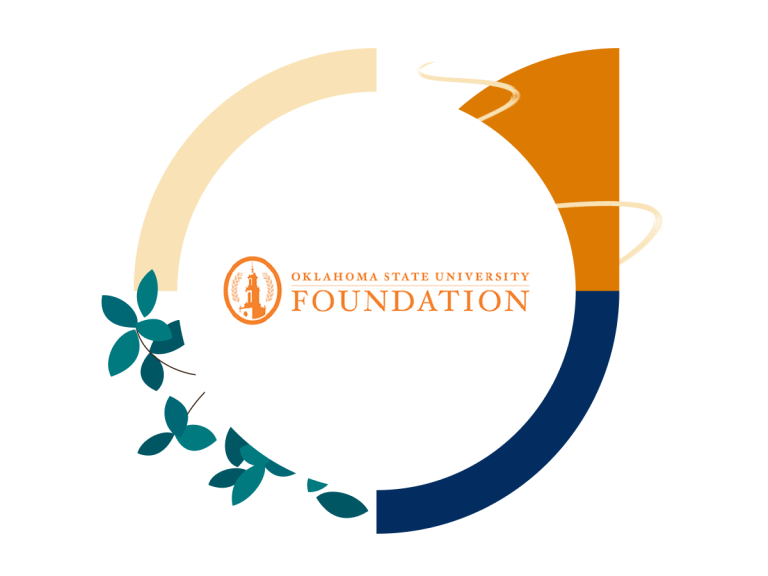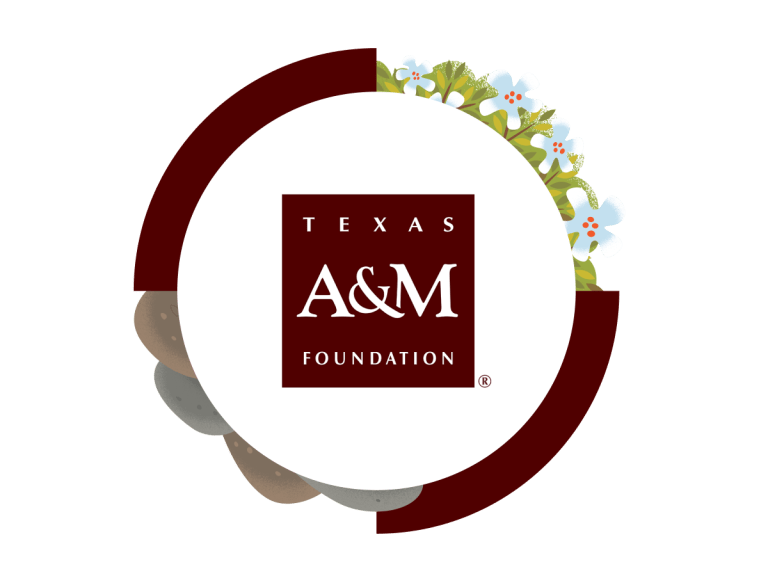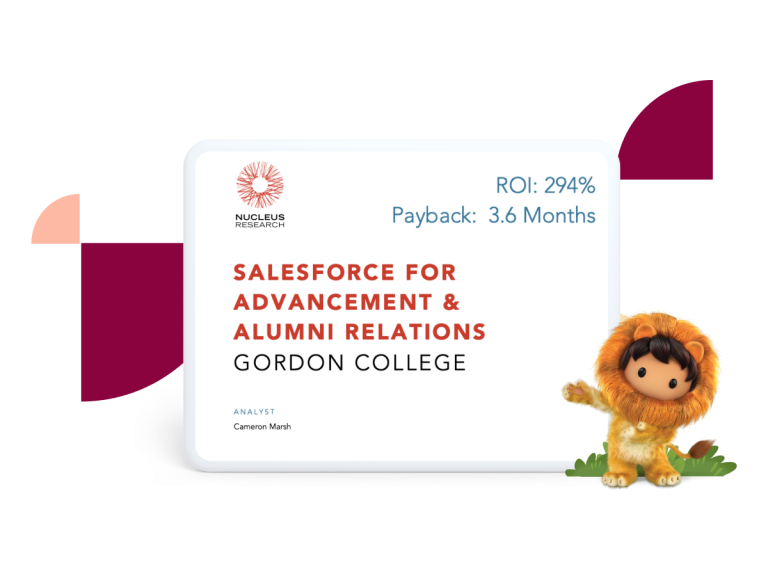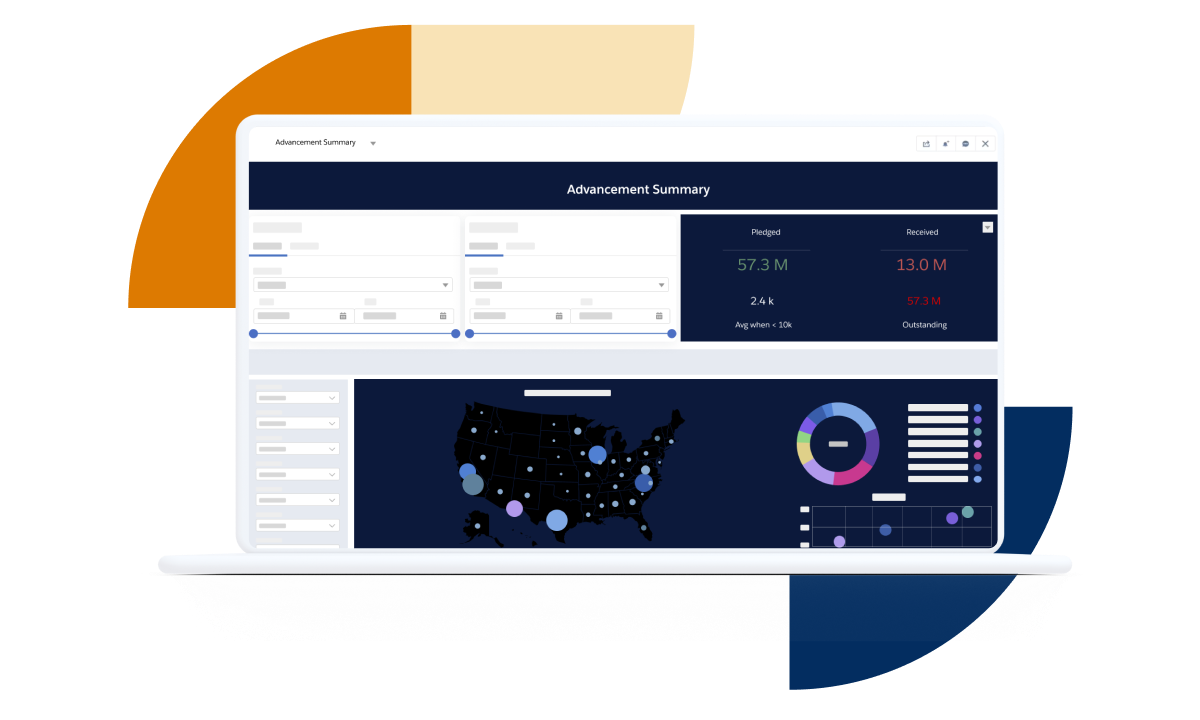Despite a global pandemic and rising inflation, fundraising for universities broke records in 2021. Almost every kind of institution benefited from the surge, including large public universities, smaller regional colleges, and community colleges. This surge may be short-lived though, as experts believe increasing inflation and an unpredictable stock market will likely impact support in the coming years. What fundraising best practices should institutions be implementing to diversify their income streams and increase alumni engagement? Here, we’ll explore how universities can thrive long-term by investing in four key fundraising strategies.
What’s the landscape of higher education fundraising today?
First, it’s important to look at the broader state of higher education fundraising across colleges and universities. Understanding the following three factors will help explain why certain higher education fundraising strategies work better than others.
- Digital fundraising is here to stay
In spite of reduced face-to-face interactions due to the pandemic, voluntary giving to higher education institutions grew thanks to digital fundraising. Voluntary giving rose 6.1% in the 2020-2021 fiscal year, according to a survey conducted by the Council for Advancement and Support for Education (CASE). This is good news for advancement offices which, with the right technology and digital strategies, can create successful university fundraising efforts that can weather any economy.
This was true for Purdue University. They sought to boost their digital fundraising efforts and quickly built a unique constituent-facing portal where donors could see gifts, access the alumni directory, and register for events. Their digital-first approach also streamlined operations for the advancement office by consolidating more than 20 separate staff groups into one, helping to improve staff productivity and increase donor engagement.
- Alumni support is increasing
Among all contributing groups tracked, alumni giving saw the greatest increase at 10.8% from 2020 to 2021, according to the CASE survey. Despite declining enrollment rates, rising costs, and shifting attitudes toward higher education, many alumni still see the value and long-term benefits of their institutions. And given the current economic climate, it’s likely alumni want to stay connected to their alma maters for networking and job opportunities. Knowing how to engage alumni donors with campaigns that resonate with them is key. That can include personalizing content to align with their career fields or interests. It also can include providing networking opportunities that build the foundation for getting involved and giving back. - Donors care about how their contributions are used
Donors want to be sure their gift is making a considerable difference toward the betterment of students. For instance, many students experienced serious hardships during the COVID-19 pandemic. In response, some universities shifted their fundraising campaigns to focus on addressing the growing needs of their students. In fact, voluntary giving data shows that clearly highlighting where donations will be going makes an impact.
The most common restriction was placed on endowment gifts — a voluntary transfer of cash to an institution that commits to using the gift in accordance to the donors’ specifications. In the 2020-2021 fiscal year, most endowment gifts were used for student financial aid only, according to the CASE survey. Donors are increasingly focused on giving back through a student-first lens, and universities should keep this in mind when trying to raise funds.
Four University Fundraising Ideas
For universities to flourish long-term, they need to strategically invest in their fundraising efforts. Adopting these four strategies can help diversify income streams so universities are better equipped to weather any economic changes or stressors.
1. Focus on human campaigns, not dollar campaigns
The current landscape of higher education fundraising points to a new approach. Ribbon-cutting ceremonies and celebrating big-ticket gifts may attract attention, but those tactics may not connect with the hearts of your alumni community and inspire them to donate. To do that, fundraising focused on human campaigns, not dollar campaigns, is key to driving collective action.
40% of students said they need help with their personal lives in order to succeed at school, according to Salesforce’s Third Edition of the Connected Student Report. As institutions look to increase services for students, they should think about how those efforts fit into the big picture of storytelling for higher education fundraising.
Here are some potential areas of focus for human-driven campaigns:
- Learning from anywhere — for all. Virtual learning is impossible if you don’t have the right tools. A “Text for Tech” campaign could target donors through text messages, asking for donations to help provide tech supplies for students in need. Including a link in the text that takes donors directly to a donation page makes donating quick and easy.
- Mental health is a key priority for students. In 2021, only a quarter of students were looking for wellbeing resources like mental health or emotional support. This jumped to 36% in 2022, according to the Third Edition of the Connected Student Report. Expanding online and telehealth services will be needed to meet demand. One way to generate support is to align campaigns with national awareness holidays. For example, May is Mental Health Awareness Month. An institution can create a “May for Mental Health” campaign to ask for donations throughout the month to support a variety of student mental health services. This may include staffing a mental health hotline, additional online resources, or the creation of a mental health office on campus.
- Student parents need more support. About half of student parents work full-time on top of studying and caregiving. Institutions can create campaigns to help student parents pay for daycare, designate or build lactation rooms and child centers on campus, and provide need-based scholarships.
- (Literally) building student success. Even the creation of new buildings on campus can champion student success. For example, a new library that includes in-house daycare services for student parents who work, offers free laptop rentals to take home, or operates with flexible hours so parents can study in a quiet area when needed, are all part of helping students succeed. Every campaign, even funding for new buildings, should include a human element.
By focusing on human-driven campaigns and goals, institutions can build a more robust, lifelong donor base –especially among alumni – who can trust that their donations are doing the most good.

Customer Story
Oklahoma State University Foundation increased its email open rate to 44% and more than doubled their gift revenue through email.
2. Consistent communication is key
Building strong and meaningful alumni relationships is vital to the advancement strategies of higher education fundraising offices. But too often, institutions forget that these relationships start the very first day of a student’s college experience, whether it’s on campus or online. Students who have a great university experience are 31 times more likely to become proud alumni. This is why relationship management is so critical. By creating a consistent line of communication with students early on, institutions can seamlessly transition to campaign efforts when those students graduate. Building a single source of truth for student data throughout their entire university experience can set the stage for increased alumni engagement from day one.
So what does relevant and consistent communication look like after students graduate? How can institutions continue to build trust and engagement through alumni relations?
Be transparent
Where is this donation going? Who will benefit from it? Donors want to know how impactful their gifts will be. Establish trust by showcasing how donations will be distributed. Institutions can do this by:
- Including infographics and data points on giving pages, such as whether the donation will help support a scholarship fund or specific academic department
- Maintaining a blog or sending routine email or text updates that show the impact of donations across campus
- Producing a yearly impact report that is sent to donors
- Creating a student success video series showcasing the impact of donations on a human level
Being transparent about where donations are being allocated helps alumni feel confident that their money is being put to good use. This establishes trust that turns one-time donors into lifelong supporters.
Keep alumni engaged for the long haul
Alumni, like most of us, lead busy lives. Keeping up with work, taking care of family, and meeting obligations leaves little room (and perhaps motivation) to engage with their alma maters. Institutions need to proactively create opportunities for engagement that appeal to alumni. For example, more than 40% of alumni surveyed in the Third Edition of the Connected Student Report indicate they will develop work-related skills through their own research or free courses. Communicating information about professional development webinars and digital networking events can lead to better engagement in the long term, and in turn, boost fundraising efforts when you reach out during giving campaigns.
Alumni benefits can also help foster engagement and connection. Yet, according to a 2020 Voluntary Alumni Engagement in Support of Education (VAESE) survey, 88% of institutions invest little to nothing in alumni benefits. In today’s highly competitive higher education market, you need to incentivize engagement. Some benefits to highlight in alumni communications could include:
- Professional development webinars
- Networking events
- Access to online journals through your institution’s library
- Alumni directory
- Travel discounts
- Access to your institution’s gym facilities
You can offer these perks for free or for a small nominal cost. But what about keeping alumni in the loop about these benefits? Start with an easy, accessible online portal. Using one helped the University of Southern California (USC) see a 50% increase in alumni logging into their community portal than under their old legacy system. The portal allows USC’s alumni to connect with each other, register for events, update their contact information directly, and will soon expand to provide additional online services for donors. An online portal is a great tool because it enables institutions to automatically invite students who have transitioned to becoming alumni and it can instantly foster connection to a college or university from anywhere. The portal is a seamless way for institutions to shift from student to alumni communications and keep the engagement going in one, central place.
Another great way to boost engagement is to offer multiple ways to stay connected. According to the 2020 VAESE survey, from 2015 to 2020, SMS (texting) channels used by universities to communicate with alumni increased by 233%, while dedicated mobile apps increased by 53%. But some communication channels stand the test of time. Despite its old-fashioned aspect, newsletters are still one of the best ways to reach donors, as 77% of institutions use them. Going digital and using CRM tools to personalize content can increase the chances of alumni reading it routinely. Texas A&M Foundation took this approach with a donor-centric lens to its alumni newsletter. They use data from their CRM to tailor content to alumni interests. The results? They saw a 78% increase in click rates.
Alumni are a key group to target in modern fundraising efforts. Taking the time to develop those relationships through personalized content keeps alumni engaged beyond graduation. If you can show alumni that your institution still cares about their success beyond their student days, they’ll likely be more inclined to engage with your institution as a lifelong learner or donor.

“Our donors have a passion. They want to talk and want to engage. That means we not only have to utilize the right communication channels, but also be responsive with the timeliness they expect.”
– Chris Speier, Vice President for Information Services
& Analytics at Texas A&M Foundation
3. Choose technology that can scale with your institution’s needs
Institutions can have great fundraising strategies in place, but they may not be able to generate strong results if the technology they use is outdated and siloed. Gordon College, a small private liberal arts institution in Massachusetts, had this problem. They wanted to improve alumni relationships and increase donor support through new initiatives, yet, their legacy system provided limited CRM functionality, making it difficult to implement their new plan. They were unable to create accurate forecasts and reports, and the inability to quickly segment and sort contact lists led to bottlenecks in campaigns. They knew they needed an upgrade.
Gordon College weighed its options and pinpointed these critical areas for a new CRM system:
- Unify all data into one single source
- The ability to deliver personalized campaigns to alumni
- Improve giving pages across every platform by analyzing page views, conversion rates, costs per donation, and the average donation amount
- The ability to integrate other marketing apps
- Ease change of management and staff training to get up and running quickly
After choosing a system with these capabilities, Gordon College realized a 294% ROI with a payback period in just under four months. And by year three, they increased the average yearly number of new donors by 48%, with overall gift-giving seeing a 10% increase. Thanks to the new system, gift officer productivity increased by over 80% as well. The ability to customize fields for reporting, track and monitor proposals and opportunities, and analyze data from donor campaigns transformed fundraising on every level for the college.

Case Study
Salesforce for Advancement ROI Case Study: Gordon College
Learn how Gordon College realized a 294% ROI with a payback period of just under 4 months after switching to Salesforce.
Morehouse College faced similar challenges with its outdated technology. Its staff was tasked with manually entering data, which led to the inability to track donors through the giving cycle. They needed new technology that could be implemented and upgraded in phases to reduce downtime, yet still, deliver immediate results.
Just one year after rolling out phase 1 of their modern CRM platform, the school raised $107 million — a record-breaking fundraising year for the institution. And on Morehouse’s 2020 Giving Tuesday, the college saved 150 hours of human capital with automatic data integration.
Thanks to the new technology, Morehouse was able to capture critical fundraising data and reduce manual administrative tasks so the advancement office could focus more on developing strategic donor relationships that led to major gifts. They plan to see more growth when they roll out phases 2 and 3, focused on digital engagement and AI technology that measures a fundraising campaign’s ROI, in the future. Their investment laid the foundation for continued growth and fundraising impact across the college.
Investing in the right technology means institutions can reduce downtime during migration, train staff quickly and with more flexibility, and realize ROI more rapidly. In today’s fast-paced environment, institutions need to look for higher education software that not only incorporates features that are easy to navigate, but include support during the implementation process.

Article
Importance of CRM for Higher Education
Learn how CRM for higher education enables colleges and universities to manage relationships with alumni in a single view.
4. Modernize the giving experience
People spend a lot of time on their phones. They bank, order food, and schedule appointments with a few easy clicks. Donating should be no different. By modernizing giving webpages for online donations — and ensuring they are mobile-friendly — advancement offices can increase conversions. To do so, look for a scalable platform that allows you to transform the alumni experience with the following features:
- Launch mobile and desktop giving pages seamlessly. Launch mobile-ready donation forms with custom fields designed to maximize donations. The flexibility to create as many fields and forms as you like for your site or as standalone pages will facilitate donor outreach. Platforms that are native to mobile but scaled up for desktop offer a consistent and smooth donor experience across devices.
- Personalize it. A system that integrates your marketing platforms enables you to personalize giving pages for each donor and improve donation form conversions. For instance, you can automatically create an ask ladder for each donor based on their giving history, prefill in donation fields (such as name and email address), and send personalized emails with a giving page directly inserted in the body copy.
- Customize ask ladders. An ask ladder is a set of suggested donation amounts found on donation and giving pages. Prebuilt ask ladders make it easy to get your giving page up and running and set the number of asks, amounts, and gift frequency to fit the campaign’s target. Describe the impact of each amount to drive donors to take action now, and default to recurring donations to make continuous giving easy.
- Integrate analytics. Powerful, integrated analytics tools can track campaign effectiveness and help universities adjust their fundraising tactics as needed. Identify top-performing giving pages by pushing source code tracking into an advancement office’s main perspective tools to decipher what kinds of giving pages work best for your audience and why.

Demo
Advancement and Alumni Engagement Demo
See how your advancement team can drive fundraising productivity, personalize alumni engagement, and streamline operations to drive efficiencies.
Bringing it all together: the right fundraising strategies with the right tools
To build a robust, dedicated donor base, institutions should focus on human campaign efforts with consistent, personalized communication. They will need to invest in the right tools and modernize the giving experience. With alumni giving on the rise, building and maintaining lifelong relationships will be vital to the success of any advancement office.
So what do those right tools look like? Education Cloud is an integrated CRM platform that empowers institutions to capture 360-degree views of learners and alumni. The platform combines several tools, including tailored marketing outreach, actionable analytics, and integrations with a robust ecosystem of partner apps — all in one place. By connecting data, simplifying collaboration, surfacing insights, and streamlining the online giving experience, institutions can increase fundraising productivity and ultimately build lifelong donor relationships.
To learn more, check out our latest case study featuring expert tips on how to achieve your institution’s fundraising goals.
Build lifelong alumni and donor relationships with Alum 360.
An advancement CRM to maximize fundraising efforts, drive marketing efficiencies, and analyze data at scale.
